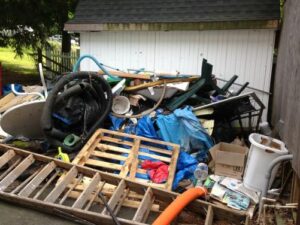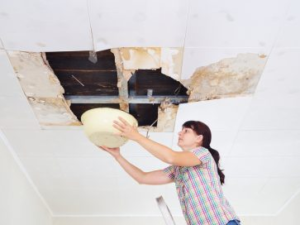Whether you’re moving or just doing some spring cleaning, junk isn’t always easy to get rid of. While ordinary trash removal is great for a regular schedule, you might want a specialized service to deal with larger items like furniture or appliances.

Junk Removal Murrieta is a great alternative to dumpster rental and lugging your own trash to the curb. Here are some of the benefits of hiring a junk removal service:
The good news is that there are plenty of eco-friendly options available through Junk Removal. For example, items like old clothing and working appliances can be donated to charities or secondhand stores. Other items, such as broken furniture and yard waste, can be recycled instead of sent to a landfill. By reducing waste and using eco-friendly disposal methods, you can play an important role in creating a greener Auckland.
Most junk removal services collect most typical home waste, including kitchen scraps, paper, and plastic. However, they generally don’t collect hazardous items such as paint, chemicals, and batteries. These can be dangerous for sanitation workers and the environment when thrown away in regular trash. By hiring a junk removal service that accepts hazardous waste, you can ensure that these materials are properly disposed of.
Hazardous waste is often stored in specialized containers or bags. These contain hazard warnings and expiration dates to help ensure that they are not thrown away incorrectly. They should also be kept in temperature-controlled environments to prevent degradation or volatility. In addition, the storage area should be well-ventilated to disperse any potentially harmful fumes.
Many junk removal companies have special containers and dumpsters for these types of waste. This helps to reduce their environmental impact, and it allows them to offer more cost-effective services than regular trash removal. However, some companies may require a surcharge for handling these materials.
Another type of junk that requires special handling is construction debris. These materials include concrete rubble, drywall, and roofing shingles. These can be difficult to dispose of because they are often dense and very heavy. They may be more expensive to haul than other junk types, and they can also pose a risk to sanitation workers when they are handled improperly.
To minimize the impact of these types of junk, you should try to limit the amount of construction waste that you generate. If possible, consider purchasing durable, long-lasting products that will last a while, and use sustainable packaging materials. You should also try to recycle as much as possible and donate any items that you no longer need.
Convenient Service
With the fast pace of modern life, finding convenient solutions to everyday tasks is key. A junk removal service near you can make your life easier by providing pickup and drop-off services at your convenience. They can schedule your junk pickup at a time that works for you, and their team will handle all the heavy lifting so you don’t have to worry about a thing. They can also help with cleanup projects and other large-scale trash removal jobs, such as a hoarding situation or estate cleanouts.
Junk removal companies vary in the types of items they’ll haul away, but most offer the same core services. They can tackle anything from old furniture and appliances to construction debris and yard waste. Some even provide pickup and disposal of hazardous materials, which is important for safe environmental protection. They may not be able to take all types of materials, so it’s best to ask about specific items before booking.
If you’re interested in junk removal near you, contact The Junkluggers serving Ridgewood today. Their efficient, friendly team is ready to help with your cleanup project and can give you a free, on-site estimate. They offer a variety of convenient service options, including same-day and next-day junk removal. Their rates are competitive and transparent, and they use eco-friendly practices to help support your community. They also offer a flexible payment system, which allows you to chat, pay, and tip all in one place.
Affordable Pricing
When your home becomes cluttered with junk and trash that won’t fit into your garbage can, it’s time to hire a service to haul it away. However, not all waste removal companies are the same. Junk removal services are generally geared towards bigger items and bulk amounts of waste. This is different from trash collection, which collects normal household waste like food scraps and paper products. In addition, junk removal companies usually recycle or donate usable items while disposing of the rest.
Junk removal prices are typically based on volume, location and labor requirements. For example, smaller jobs like a single item or a few boxes of junk fall on the lower end of the pricing scale while large cleanouts and those requiring hard-to-access locations tend to be higher. Additionally, certain materials can cost more to dispose of, including electronics and yard waste.
Some junk removal services offer transparent pricing based on several factors so you know exactly what to expect. This makes it easy to plan your budget and choose a junk removal company that fits your needs. Moreover, reputable junk removal services will recycle or donate items whenever possible, which benefits the environment and community.
Aside from affordable pricing, junk removal services can save you money by avoiding disposal fees and renting a dumpster. This can be especially useful if you’re working on a long-term project, such as a construction site or a major cleaning or remodeling project. In addition, they can help you avoid costly fines for illegal dumping of hazardous materials or other violations.
Junk removal services can also provide a variety of other services, including furniture donation, appliance recycling, and attic cleanups. You can find the best junk removal service for your needs by evaluating the available options and considering what’s important to you, such as cost, convenience, and environmental impact. Once you’ve found the right service, you can begin to reclaim your space and transform your home or business!
Trusted Service
Junk removal services provide an efficient, reliable option for clearing out large scale clutter and unwanted items. Whether you’re downsizing, moving to a new home or office, or cleaning out an estate, their teams will handle your junk and ensure your items are responsibly disposed of or recycled. They can also help with post-renovation clean-up to make your property ready for use.
Junk removal companies in this area work hard to keep the community clean and pristine with fast, eco-friendly junk disposal service. Their services include household trash removal, yard waste hauling, scrap metal recycling, furniture donation service, and full property cleanouts. They can also handle emergency hauling, ensuring quick service for urgent junk cleanup needs.
